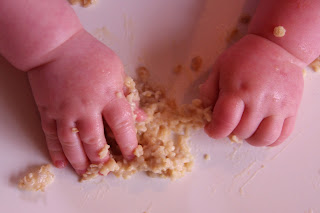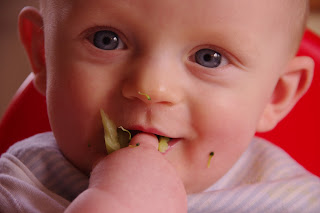As Autumn turns cold and soggy, I only have to look at my now-full preserves shelf to feel cheered.
This has been an incredible year for all kinds of fruit. Our Bramley tree which last year produced a grand total of 3 apples, has this year excelled itself and we have had more than we know what to do with. Of course we've made great efforts to use what we can in cakes, puddings and chutneys, and I've enjoyed experimenting with a couple of new jams and jellies, as well as the 'usuals' (apple chilli, apple rosemary, and apple mint, instructions for which can be found earlier in this blog).
First off, Spiced Apple Butter. Apple Butter is a very North American treat, although I don't think I ever actually ate it when I lived in Canada. Slightly confusingly, it contains no actual butter, but is a long-cooked apple puree, often with spices such as cinnamon added. I decided to try a recipe that used my rather neglected slow-cooker, and the results were delicious, making the entire house smell like Christmas!
I've put it all into sterilised jars ready to use in some festive baking. I have of course sampled some already and it's great on toast.
The recipe can be found here, on the Frugal Foodie Mama website.
Next was Apple Quince Jelly. I adore quinces, with their heady, almost floral scent, but they seem very difficult to come by in the shops. This year I was lucky and managed to pick up a few windfalls locally.
The flavour is intense so you actually don't need many to produce a beautiful preserve, bulked up of course with some apples! Just look at this gorgeous colour, and it tastes wonderful too. It's currently my breakfast toast-topping of choice.
I found the recipe here, on this nice foodie blog.
Finally, Apple Sloe Jelly. The hedgerows are laden with sloes this year. I have never used them for anything, save for drinking my father's homemade Sloe Gin! On the tree they are mean fruit, small, hard and lip-puckeringly sour, but I felt sure that there must be potential for using them in something other than liqueur.
A quick google brought me to this recipe, on The Cottage Smallholder (which incidentally is a fabulous blog, bursting with useful recipes). Like the Quince jelly, this is a luscious colour, dark ruby red and gloriously clear (never squeeze the jelly bag when you're straining the fruit, otherwise your jelly will be cloudy). I had slightly too much of this to fit in the available jars, so I'm currently working my way through a bowl of it on my toast. (I eat a lot of toast!). It's also popular with the youngest member of the household.
I turn my back for a second...
The recipe indicates that this is a good jelly to eat with meats, but personally I think it's a little too sweet for that. There's a lot of sugar in there (and I used a little less than the 1.5lb per pint stipulated as I ran out of sugar), so the sourness of the sloes has disappeared in my batch. This makes it perfect as a jam, but probably not so suitable for eating with your sausages. If I were to make it again (and I will) I think I would use 1lb of sugar per pint of juice, as you do usually when making jellies.
So all in all a successful year of preserving. Just in case I forget to blog it properly, I also experimented with a new chutney, one that includes tomatoes. The recipe is here, on the BBC Good Food website. I used red pepper instead of green, but otherwise the recipe was unchanged by me. It's still maturing in jars so I have yet to taste it, but I'm looking forward to it!














































